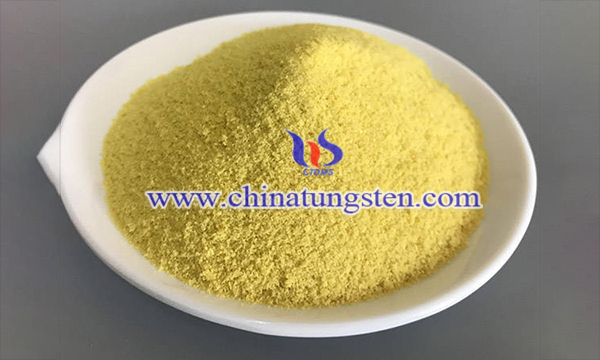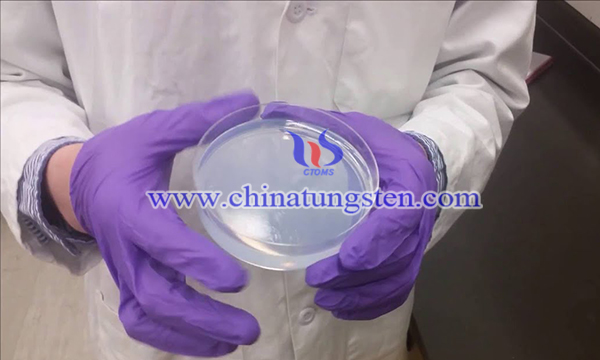Preparation of Nanosized Tungsten Trioxide by Sol-Gel Method
- Details
- Category: Tungsten Information
- Published on Saturday, 25 September 2021 10:18
Tungsten trioxide (WO3) is a non-toxic n-type semiconductor with an indirect and general wide band gap in the range of 2.4-3.6 eV. Therefore, it is an excellent candidate for applications in various fields of industry, medicine, science and military engineering. This effect is due to the unique properties of tungsten oxide nanostructures and their composite materials, such as excellent thermal corrosion resistance and good ductility, high density, strength and elastic modulus, amazing antibacterial activity, and efficient heat and activity Oxygen (ROS) production through light interaction.

Many attempts have been made to investigate the effect of synthesis parameters on WO3 nanostructures produced by different synthesis methods. Among them, sol-gel is an easy, low-temperature, and inexpensive method which can provide high-quality and uniformly distributed nanoparticles with high purity through low temperature irreversible chemical reactions.Nanosized tungsten trioxide has been prepared by simple and low-price sol-gel method without using any additive materials. The effect of mixing sequences and aging durations on WO3 and its gas sensor has also been investigated. The synthesis process of nanosized WO3 is as below:
First, 40 ml of 0.15 M Na2WO4 was added drop by drop from 25 ml burette into 15ml 3 M nitric acid (HNO3) under vigorous stirring. The sample was labeled as W-A. For the other experiment, all the experiment parameters were repeated and remained the same except that 3 M HNO3 was added into 0.15 M Na2WO4. The sample was labeled as A-W. Samples were left aging at 25 °C for 30 days.

Samples were characterized by field emission scanning electron microscope (FESEM, FEI Nova NanoSEM 450) and X-ray diffraction (HR-XRD, PANalytical X‘Pert PRO εRD PWγ040) to study their morphological and structural properties. To examine the hydrogen sensing properties, the samples were screen-printed on 0.25x0.25 inches interdigitated gold electrodes from Synkera. Prior to the measurement, the devices were annealed at 400 °C for 2 h in ambient air. Hydrogen sensing measurements were conducted at room temperature in a conventional gas flow system with 2000 sccm flow rate of 1000 ppm concentration of hydrogen. Keithley 2400 source meter unit was employed for the current-voltage measurement
In summary, nanosized tungsten trioxide has been prepared by simple and low-price sol-gel method without using any additive materials. It reveals that that the mixing sequences and aging durations could significantly affect the properties of the WO3 and its gas sensor application. Increase of the aging duration allows the formation of uniform platelet structure where no structure could be detected at 1 aging day while uniform platelet structure could be detected at 30 days. Hydrated tungsten oxide platelets of 1-1.θ ȝm could be formed by mixing sodium tungstate into nitric acid (sample labeled as W-A) which could be reduced significantly in size to 200-600 nm by changing the mixing sequence to drop nitric acid into sodium tungstate (sample labeled as A-W). Crystalline hydrated tungsten oxides were obtained for both samples where W-A sample shows better degree of crystallinity. Room temperature hydrogen gas sensing property was successfully detected by both samples where A-W sample demonstrates ~2.5 times higher sensor response to hydrogen gas compared to W-A sample.
- Tungsten Oxide Manufacturer & Supplier, Chinatungsten Online: www.tungsten-oxide.com
- Tungsten News & Prices of China Tungsten Industry Association: www.ctia.com.cn
- Molybdenum News & Price: news.molybdenum.com.cn
- Tel.: 86 592 5129696; Fax: 86 592 5129797; Email: sales@chinatungsten.com



 sales@chinatungsten.com
sales@chinatungsten.com